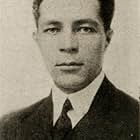A group of actors in various costumes including powdered-wigged 18th century interlocutor, and black-faced comedian side men, engage in some jokes and sing several songs, including "Grand In... Read allA group of actors in various costumes including powdered-wigged 18th century interlocutor, and black-faced comedian side men, engage in some jokes and sing several songs, including "Grand Introductory Overture", "Soldier's Chorus from Faust", "Silver Threads Among The Gold" and t... Read allA group of actors in various costumes including powdered-wigged 18th century interlocutor, and black-faced comedian side men, engage in some jokes and sing several songs, including "Grand Introductory Overture", "Soldier's Chorus from Faust", "Silver Threads Among The Gold" and the then current hit "When The Midnight Choo-Choo Leaves For Alabam". The finale is a patri... Read all
Photos
Featured reviews
Unlike other minstrel shows of the time where everybody wore loud comical suits, these minstrels are dressed in medieval costumes. The interlocutor - front and center - and the orchestra - seated in the back - are wearing costumes from the period of George III. The rest of the company is wearing costumes that appear to be of the Elizabethan period. There are a couple of jokes, a baritone solo by John McCormick, and a tenor solo by George Ballard.
The finale involves a British flag appearing on the left side of the screen and an American flag appearing on the right side. The company then sings the chorus from an American patriotic song, then sings Dixie - probably in tribute to the origin of the minstrel show - and finally the company sings "God Save the King" while standing with the interlocutor actually saluting at this point. The rest of the company points backwards but not towards either flag.
Why all of this deference to Great Britain? Maybe Edison was aware that if talking film became practical that silent film, employing the universal language of pantomime, was finished? In that case the makers of English language films were going to need each other's audience! Or maybe it was just the same old story with Edison - great on the technical matters, pretty goofy on artistic points, and this short film was a case in point of that goofyness.
Edison's Kinetophone films are interesting, but the issue of synchronization - which is what would be the issue with Vitaphone 15 years later, with the fact that films could not be made that were any longer than six minutes, as well as the static camera, and last of all the film projectors' union doomed this invention for the long haul and widespread adoption.
The film consists of a stationary camera recording a singing group where a couple of the performers are in black face--most (including the band) are not. Considering it's from 1913, it's not surprising that the songs are very old fashioned and full to modern tastes....and you really cannot hold that against the film and if they sing a number you dislike, well, they soon go to another tune which you might just prefer! It's a technical masterpiece.
By the way, apparently the film is STILL in need of further restoration, and IMDB points out that the final song is NOT from the original film and is NOT synchronized properly.
It's a minstrel show. It's a form of entertainment that was in terminal decline then, and more than a hundred years later, a modern audience will recoil at its stereotyped, black-faced performers. Nonetheless, it's an interesting and important historical record. Most of our records of minstrel shows were made decades later and lacked the ambient assumptions of the era; the closest they could come was a nostalgia for the form which lent its set and tired details a freshness they did not possess. Those of us who study very old movies are tourists in a foreign land. We are largely happy to return home to the 21st Century, but when we visit 1913, we want to see how the natives think and talk and behave, not our fellow tourists complaining about how foolish the locals are not to be us.
Here we have the local natives And now I have gone home, glad to be in my own time and place.
This essay at talking pictures would not last. It would be more than a dozen years before technical and financial issues would come together and silent pictures would be wiped away, and early efforts like this forgotten for a century.
Did you know
- TriviaWhen this film was shown at B. F. Keith's theatre in Boston, a local audience applauded several numbers and "..fairly out-did itself in cheering and clapping" at the end as a slide of Edison's face was cast on the screen. "It was one of the greatest tributes which has ever been paid to a living American" (Boston Post , 25 February 1913)
Details
- Runtime6 minutes
- Color


